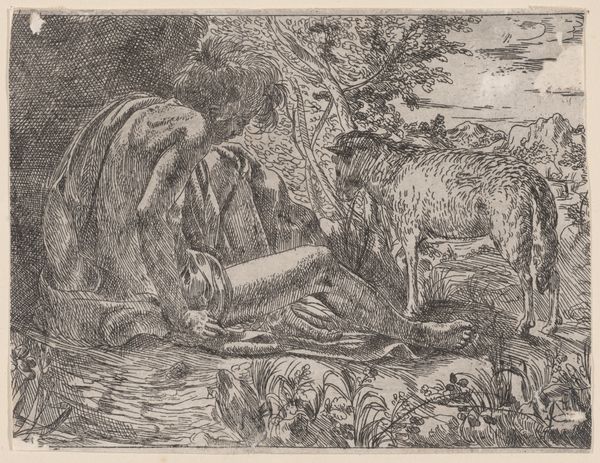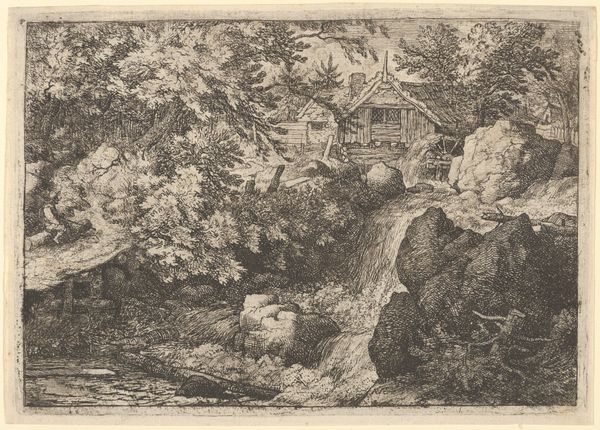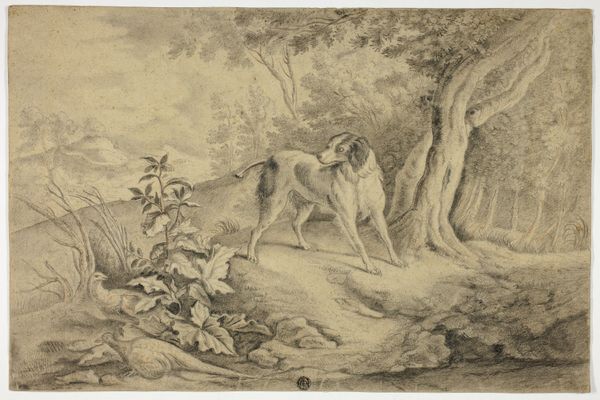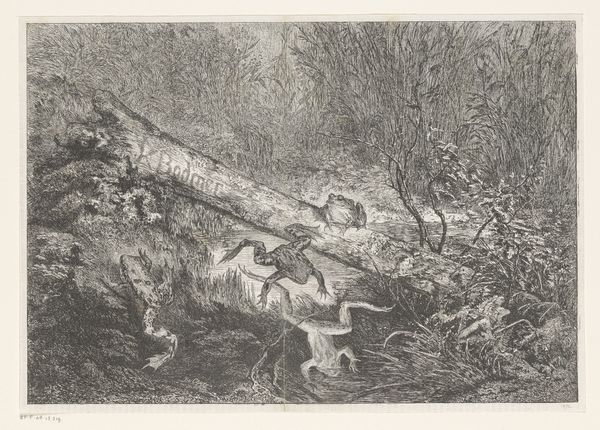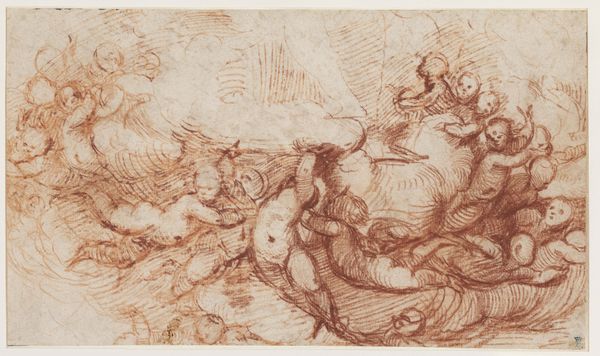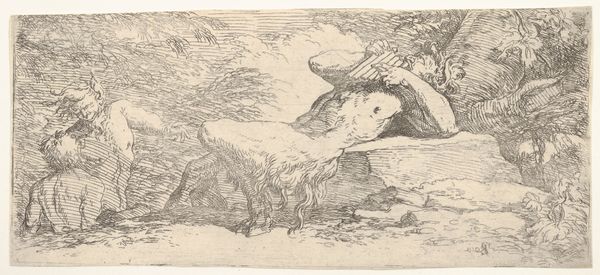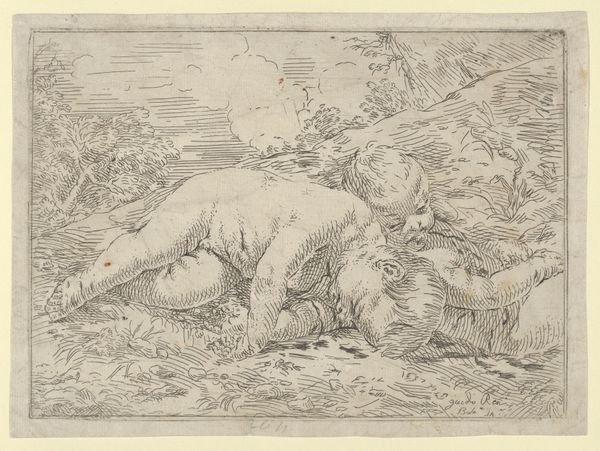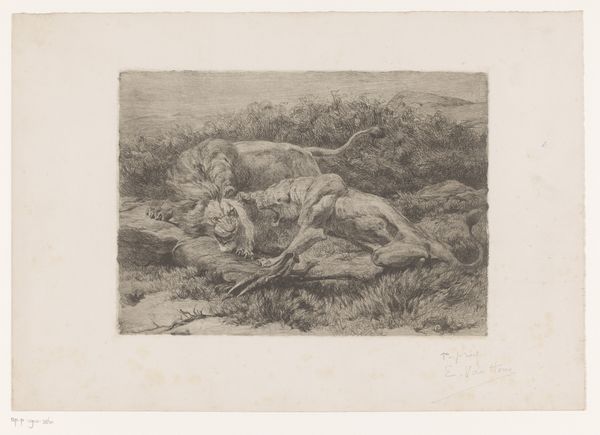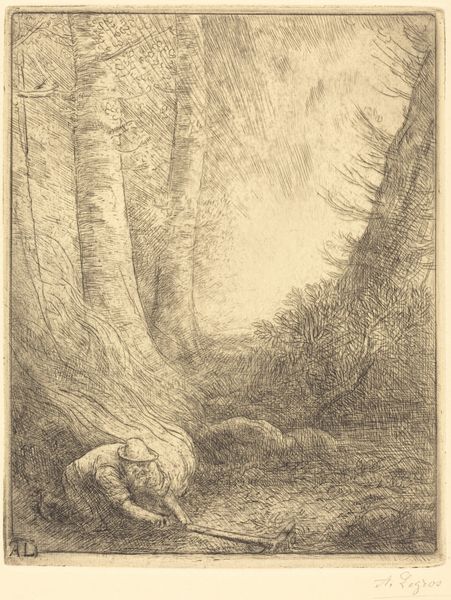
Abhang mit Felsblöcken und Ölbäumen im Park der Prinzen Chigi zu Ariccia 1818
0:00
0:00
drawing, paper, pencil, graphite
#
pencil drawn
#
drawing
#
pencil sketch
#
landscape
#
paper
#
pencil drawing
#
romanticism
#
pencil
#
graphite
Copyright: Public Domain
Curator: We’re standing before Johann Christian Reinhart's "Abhang mit Felsblöcken und Ölbäumen im Park der Prinzen Chigi zu Ariccia," created around 1818. It’s a meticulously rendered drawing in graphite on paper. Editor: Oh, wow. It feels like peering into a forgotten, quiet corner of the world. Sort of melancholic, even with all that detail. Makes me want to write a poem about a long lost memory. Curator: That feeling of melancholy certainly connects to the Romantic period, which prioritized emotion and the sublimity of nature, often against the backdrop of industrial and political upheaval. The work represents the landscape near Ariccia, and is an excellent example of Reinhart's deep appreciation for the Italian countryside. He captures every stone, every leaf, with near photographic accuracy. Editor: "Photographic," yes, but there's a soul to it that photography often misses, don’t you think? I imagine him, patiently observing, capturing not just the scene, but also a sense of place and timelessness. I wonder what the artist was thinking, stuck in those rocks. The textures practically invite you to touch them, run your hand over the coarse surfaces. Curator: Exactly! This idealized vision aligned with a yearning for simpler times and the enduring power of nature. Remember, during this period, there was great emphasis on returning to classical ideals. Editor: And in that sense it's inherently political, isn’t it? To find solace and value in a specific version of nature? This piece, in its devotion to detail and its longing…it feels radical in its own quiet way, especially given all the wars and political shifts happening then. Curator: Yes, these Romantic landscapes weren’t merely pretty scenes; they were often loaded with meaning, critiquing contemporary society while highlighting idealized and timeless landscapes of reflection. Editor: I see, a real escape from that age of empire building. And so masterfully executed. The tonal range achieved with just pencil is incredible. One last thing—those rocks and tree stumps seem like something out of a fairytale, an invitation to go beyond the artwork itself. Curator: That's well-observed. The level of artistry speaks volumes about our evolving understanding of nature's importance, as seen in this graphite and paper landscape. Editor: Right! Now I can't look at graphite and paper the same way ever again.
Comments
No comments
Be the first to comment and join the conversation on the ultimate creative platform.
